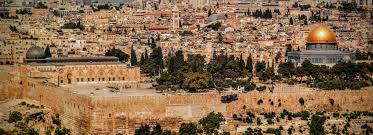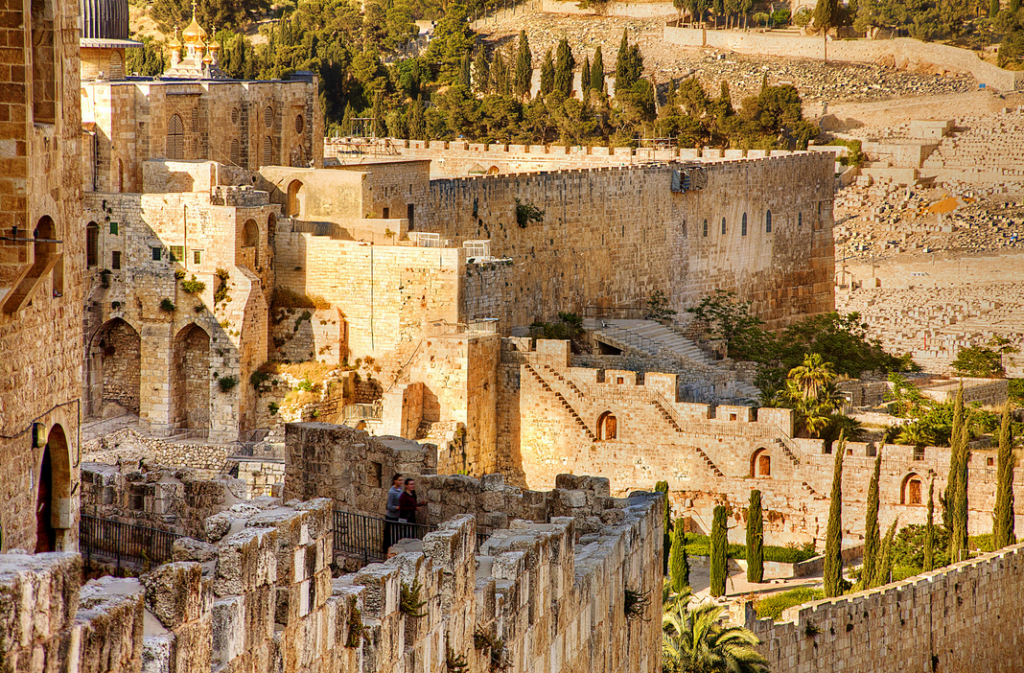Jerusalem is a city where time stands still. It is also a city that is modern, vibrant and has the energy of a small Manhattan. Depending on your vantage point, it can be all the above or the sum of many elements.
When planning a trip to Israel, Jerusalem is the place that comes to mind. The history, the cradle of civilization, the sheer weight of the religious perseverance is a lot to ponder and absorb. I entered from the North, after a tour of the Golan Heights area, arriving in the early afternoon. Stopping at Mt. Scopus, the vantage point was incredible, almost surreal to be standing and viewing the vast accomplishments of humankind and the conflict that transpired throughout the ages.
Traversing down the winding streets was an interesting adventure. Lots of traffic and various cultural differences in dealing with the clogged streets including stopping, getting out of the car and directing the traffic!
We arrived in the area near the Mamilla Mall, a stunning new pedestrian mall that leads to some historic sites. The original Mamilla Street extended from the Mamilla Pool to Jaffa Gate. Along this street, wealthy Arabs constructed homes, offices and stores in the 1800s. Toward the end of the 19th century, and especially during the British Mandate era, the street became a fashionable commercial district. Both Arab and Jewish businessmen operated high-end shops for furniture, textiles, housewares, art, photography, and automobile showrooms. It fell into disrepair and has now transformed into a fabulous international shopping and dining mecca.
During its long history, Jerusalem has been destroyed at least twice, besieged 23 times, attacked 52 times, and captured and recaptured 44 times. The part of Jerusalem called the City of David was settled in the 4th millennium BCE. In 1538, walls were built around Jerusalem under Suleiman the Magnificent. Today those walls define the Old City, which has been traditionally divided into four quarters—known since the early 19th century as the Armenian, Christian, Jewish, and Muslim Quarters. The Old City became a World Heritage Site in 1981, modern Jerusalem has grown far beyond the Old City’s boundaries.
Although Jerusalem is known primarily for its religious significance, the city is also home to many artistic and cultural venues. The Israel Museum attracts nearly one million visitors a year, approximately one-third of them tourists. The 20-acre museum complex comprises several buildings featuring special exhibits and extensive collections of Judaica, archaeological findings, and Israeli and European art. The Dead Sea scrolls, discovered in the mid-20th century in the Qumran Caves near the Dead Sea, are housed in the Museum’s Shrine of the Book.
Next to the Israel Museum is the Bible Lands Museum, near The National Campus for the Archaeology of Israel, which includes the Israel Antiquities Authority offices. The Youth Wing, which mounts changing exhibits and runs an extensive art education program, is visited by 100,000 children a year. The museum has a large outdoor sculpture garden and a scale-model of the Second Temple.
No trip to Jerusalem would be complete without a stop at Ammunition Hill. A key element during the 6- Day War, this was the actual battlefield that was pivotal in uniting Jerusalem as one city. The museum is a very modern interpretation of the events that transpired, with a stunning photo exhibit as well as actual artifacts and belongings of each of the soldiers who lost their lives because of the battle.
There are so many things to explore in the city of Jerusalem, one visit barely scratches the surface. A great vantage point and luxury hotel is the Inbal. A doorway to the city’s unique culture and vibe, we were surrounded in 5-star luxury at all times. The attentive staff, the stunning rooms, the amazing cuisine as well as the spa were all impeccable.

























